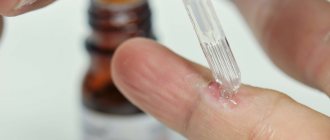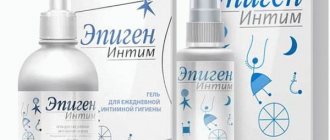PIOBACTERIOPHAGE COMPLEX solution for oral, local and external use 100ml bottle
Pyobacteriophage is intended for local and oral use, as well as for rectal administration. Treatment of purulent-inflammatory processes is recommended through simultaneous local and oral administration of the drug Piobacteriophage. Depending on the location of the infection, Pyobacteriophage is recommended for: 1. Local application in the form of lotions, irrigations, applications and tampons, moistened solutions. In this case, use the required amount of solution based on the size of the affected area. For abscesses, the solution should be injected into the cavity after removing the pus by puncture (the volume of the solution should be slightly less than the volume of the extracted pus). 2. Injection of the solution into the pleural, articular and other limited cavities. After administering the required amount of bacteriophage, capillary drainage is left, through which repeated doses of the drug are subsequently administered. 3. Injection of the solution into the drained cavity of the bladder and renal pelvis through a cystostomy or nephrostomy. 4. Introducing the solution into the uterine or vaginal cavity, including in the form of tampons soaked in the solution. 5. Instillation, washing and rinsing, as well as the introduction of turundas moistened with a solution, in otolaryngological practice. 6. Applications to the conjunctival sac in ophthalmological practice. 7. Insertion of moistened turundas into periodontal pockets in dental practice. 8. Introductions into the rectum in the form of enemas in gastroenterological practice. The dose of the drug Piobacteriophage and the duration of the course of therapy are determined by the doctor. A single dose recommended for children under 6 months is 5 ml when administered orally or 10 ml when administered rectally. A single dose recommended for children 6-12 months is 10 ml when administered orally and 20 ml when administered rectally. A single dose recommended for children 1-3 years old is 15 ml when administered orally and 30 ml when administered rectally. A single dose recommended for children 3-8 years old is 20 ml when administered orally and 40 ml when administered rectally. A single dose recommended for children over 8 years of age and adults is 30 ml when administered orally and 50 ml when administered rectally. In the treatment of purulent-inflammatory diseases and intestinal diseases, as a rule, the appropriate single dose is prescribed three times a day. If, when using a bacteriophage locally, the wound was pre-treated with an antiseptic, it is necessary to wash the wound with a 0.9% sodium chloride solution before using the Piobacteriophage solution. For children under 6 months of age with enterocolitis and sepsis, Piobacteriophage solution is administered in the form of high enemas twice or thrice a day. If the child does not develop regurgitation and vomiting, the drug can be given orally. The average duration of therapy is from 5 to 15 days. As a prophylaxis, the drug is prescribed in a single dose twice a day for 5-7 days.
Pyobacteriophage Complex solution for internal and local use 100ml
Compound
The solution contains:
Active substances: a mixture of sterile filtrates of phagolysates of staphylococci, streptococci, enterococci, Proteus, Klebsiella (pneumonia and oxytoca), Pseudomonas aeruginosa and Escherichia coli 100 ml.
Pharmacokinetics
Pyobacteriophage liquid complex is a preparation that has a specific selective antibacterial effect. Pyobacteriophage is active against strains of streptococci, Proteus, staphylococci, enterococci, oxytoca, Pseudomonas aeruginosa, Klebsiella pneumoniae and Escherichia coli. Pyobacteriophage lyses sensitive bacteria due to the ability to attach to their membrane and penetrate into the cell. In a bacterial cell, phage particles multiply at the expense of the energy resources of microorganisms, which leads to their death. After the death of a bacterial cell, mature phage particles emerge that can infect other sensitive microorganisms. Pyobacteriophage does not affect other types of bacteria and does not cause disturbances in the natural microflora.
Indications for use
Treatment and prevention of purulent-inflammatory and intestinal diseases caused by staphylococci, enterococci, streptococci, Pseudomonas aeruginosa, Klebsiella, pathogenic Escherichia coli of various serogroups, Proteus for internal, rectal and external use:
- Diseases of the ear, throat, nose, respiratory tract and lungs: inflammation of the sinuses, middle ear, sore throat, pharyngitis, laryngitis, tracheitis, bronchitis, pneumonia, pleurisy.
- Surgical infections: wound suppuration, burns, abscess, phlegmon, boils, carbuncles, hydroadenitis, panaritium, paraproctitis, mastitis, bursitis, osteomyelitis.
- Urogenital infections: urethritis, cystitis, pyelonephritis, colpitis, endometritis, salpingoophoritis.
- Post-traumatic conjunctivitis, keratoconjunctivitis, purulent corneal ulcers and iridocyclitis.
- Enteral infections: gastroenterocolitis, cholecystitis, dysbacteriosis.
- Generalized septic diseases.
- Purulent-inflammatory diseases of newborns: omphalitis, pyoderma, conjunctivitis, gastroenterocolitis, sepsis, etc.
- Other diseases caused by bacteria: staphylococci, streptococci, enterococci, Proteus, Klebsiella pneumoniae and oxytoca, Pseudomonas aeruginosa and Escherichia coli.
For prophylactic purposes, the drug is used for the treatment of surgical and newly infected wounds, as well as for the prevention of nosocomial infections for epidemic indications.
An important condition for effective phage therapy is the preliminary determination of the phage sensitivity of the pathogen.
Contraindications
None.
Directions for use and doses
Pyobacteriophage is intended for local and oral use, as well as for rectal administration. Treatment of purulent-inflammatory processes is recommended through simultaneous local and oral administration of the drug Piobacteriophage. Depending on the location of the infection, Pyobacteriophage is recommended for: 1. Local application in the form of lotions, irrigations, applications and tampons, moistened solutions. In this case, use the required amount of solution based on the size of the affected area. For abscesses, the solution should be injected into the cavity after removing the pus by puncture (the volume of the solution should be slightly less than the volume of the extracted pus). 2. Injection of the solution into the pleural, articular and other limited cavities. After administering the required amount of bacteriophage, capillary drainage is left, through which repeated doses of the drug are subsequently administered. 3. Injection of the solution into the drained cavity of the bladder and renal pelvis through a cystostomy or nephrostomy. 4. Introducing the solution into the uterine or vaginal cavity, including in the form of tampons soaked in the solution. 5. Instillation, washing and rinsing, as well as the introduction of turundas moistened with a solution, in otolaryngological practice. 6. Applications to the conjunctival sac in ophthalmological practice. 7. Insertion of moistened turundas into periodontal pockets in dental practice. 8. Introductions into the rectum in the form of enemas in gastroenterological practice. The dose of the drug Piobacteriophage and the duration of the course of therapy are determined by the doctor. A single dose recommended for children under 6 months is 5 ml when administered orally or 10 ml when administered rectally. A single dose recommended for children 6-12 months is 10 ml when administered orally and 20 ml when administered rectally. A single dose recommended for children 1-3 years old is 15 ml when administered orally and 30 ml when administered rectally. A single dose recommended for children 3-8 years old is 20 ml when administered orally and 40 ml when administered rectally. A single dose recommended for children over 8 years of age and adults is 30 ml when administered orally and 50 ml when administered rectally. In the treatment of purulent-inflammatory diseases and intestinal diseases, as a rule, the appropriate single dose is prescribed three times a day. If, when using a bacteriophage locally, the wound was pre-treated with an antiseptic, it is necessary to wash the wound with a 0.9% sodium chloride solution before using the Piobacteriophage solution. For children under 6 months of age with enterocolitis and sepsis, Piobacteriophage solution is administered in the form of high enemas twice or thrice a day. If the child does not develop regurgitation and vomiting, the drug can be given orally. The average duration of therapy is from 5 to 15 days. As a prophylaxis, the drug is prescribed in a single dose twice a day for 5-7 days.
Storage conditions
In a dry place, protected from light, at a temperature of 28 C
Best before date
2 years
special instructions
Before use, the bottle with liquid bacteriophage must be shaken. If cloudy, do not use!
Conditions for dispensing from pharmacies
Available with prescription
Side effects
No undesirable effects were observed when using the drug Piobacteriophage.
Use during pregnancy and breastfeeding
During pregnancy and breastfeeding, the drug Piobacteriophage can be prescribed by your doctor.
Interaction
The use of the drug is possible in combination with other drugs, incl. with antibiotics.
Overdose
Measures to assist in case of overdose have not been established.
Pyobacteriophage complex 100ml
Directions for use and doses
Treatment of purulent-inflammatory diseases with localized lesions should be carried out simultaneously both locally and through the mouth, for 7-20 days (according to clinical indications).
Depending on the nature of the source of infection, the bacteriophage is used:
- Locally in the form of irrigation, lotions and tamponing with liquid phage in an amount of up to 200 ml, depending on the size of the affected area. For abscesses, the bacteriophage is injected into the cavity of the lesion after removing the pus using a puncture. The amount of the administered drug should be slightly less than the volume of removed pus. In case of osteomyelitis, after appropriate surgical treatment, 10-20 ml of bacteriophage is poured into the wound.
- Introducing up to 100 ml of bacteriophage into cavities - pleural, articular and other limited cavities, after which capillary drainage is left, through which the bacteriophage is reintroduced over several days.
- For cystitis, pyelonephritis, urethritis, the drug is taken orally. If the cavity of the bladder or renal pelvis is drained, the bacteriophage is injected through the cystostomy or nephrostomy 1-2 times a day, 20-50 ml into the bladder and 5-7 ml into the renal pelvis.
- For purulent-inflammatory gynecological diseases, the drug is administered into the cavity of the vagina and uterus in a dose of 5-10 ml once daily.
- For purulent-inflammatory diseases of the ear, throat, nose, the drug is administered in a dose of 2-10 ml 1-3 times a day. The bacteriophage is used for rinsing, washing, instilling, introducing moistened turundas (leaving them for 1 hour).
- For conjunctivitis and keratoconjunctivitis, the drug is instilled 2-3 drops 4-5 times a day, for a purulent corneal ulcer - 4-5 drops, for purulent iridocyclitis, the drug is used 6-8 drops every 3 hours in combination with oral administration.
- In the treatment of stomatitis and chronic generalized periodontitis, the drug is used in the form of rinses in the mouth 3-4 times a day in a dose of 10-20 ml, as well as by introducing turundas impregnated with pyobacteriophage into the periodontal pockets for 5-10 minutes.
- For intestinal forms of the disease, diseases of internal organs, and dysbiosis, the bacteriophage is used orally and in an enema. The bacteriophage is given orally 3 times a day on an empty stomach, 1 hour before meals. In the form of enemas, they are prescribed 1 time/day instead of one dose orally.
Recommended dosages of the drug:
- Age 0-6 months. - 5 ml (dose per 1 dose orally) - 10 ml (dose per 1 dose rectally).
- Age 6-12 months. - 10 (dose per 1 dose orally) - 20 (dose per 1 dose rectally).
- Age from 1 year to 3 years - 15 (dose per 1 dose orally) - 30 (dose per 1 dose rectally).
- Age from 3 to 8 years - 20 (dose per 1 dose orally) - 40 (dose per 1 dose rectally).
- Ages from 8 years and older - 30 (dose per 1 dose orally) - 50 (dose per 1 dose rectally).
The use of bacteriophages does not exclude the use of other antibacterial drugs. If chemical antiseptics were used to treat wounds before using the bacteriophage, the wound should be thoroughly washed with a sterile 0.9% sodium chloride solution.
Use of bacteriophage in children (up to 6 months). For sepsis and enterocolitis in newborns, including premature babies, the bacteriophage is used in the form of high enemas (through a gas tube or catheter) 2-3 times a day (see table). In the absence of vomiting and regurgitation, it is possible to use the drug by mouth. In this case, it is mixed with breast milk. A combination of rectal (in enemas) and oral (by mouth) use of the drug is possible. The course of treatment is 5-15 days. In case of recurrent course of the disease, repeated courses of treatment are possible. In order to prevent sepsis and enterocolitis during intrauterine infection or the risk of nosocomial infection in newborns, the bacteriophage is used in the form of enemas 2 times a day for 5-7 days.
In the treatment of omphalitis, pyoderma, and infected wounds, the drug is used in the form of applications twice daily (a gauze pad is moistened with a bacteriophage and applied to the umbilical wound or to the affected area of the skin).
Pyobacteriophage complete liquid 100ml (Microgen)
Pyobacteriophage is intended for local and oral use, as well as for rectal administration. Treatment of purulent-inflammatory processes is recommended through simultaneous local and oral administration of the drug Piobacteriophage. Depending on the location of the infection, Pyobacteriophage is recommended for: 1. Local application in the form of lotions, irrigations, applications and tampons, moistened solutions. In this case, use the required amount of solution based on the size of the affected area. For abscesses, the solution should be injected into the cavity after removing the pus by puncture (the volume of the solution should be slightly less than the volume of the extracted pus). 2. Injection of the solution into the pleural, articular and other limited cavities. After administering the required amount of bacteriophage, capillary drainage is left, through which repeated doses of the drug are subsequently administered. 3. Injection of the solution into the drained cavity of the bladder and renal pelvis through a cystostomy or nephrostomy. 4. Introducing the solution into the uterine or vaginal cavity, including in the form of tampons soaked in the solution. 5. Instillation, washing and rinsing, as well as the introduction of turundas moistened with a solution, in otolaryngological practice. 6. Applications to the conjunctival sac in ophthalmological practice. 7. Insertion of moistened turundas into periodontal pockets in dental practice. 8. Introductions into the rectum in the form of enemas in gastroenterological practice. The dose of the drug Piobacteriophage and the duration of the course of therapy are determined by the doctor. A single dose recommended for children under 6 months is 5 ml when administered orally or 10 ml when administered rectally. A single dose recommended for children 6-12 months is 10 ml when administered orally and 20 ml when administered rectally. A single dose recommended for children 1-3 years old is 15 ml when administered orally and 30 ml when administered rectally. A single dose recommended for children 3-8 years old is 20 ml when administered orally and 40 ml when administered rectally. A single dose recommended for children over 8 years of age and adults is 30 ml when administered orally and 50 ml when administered rectally. In the treatment of purulent-inflammatory diseases and intestinal diseases, as a rule, the appropriate single dose is prescribed three times a day. If, when using a bacteriophage locally, the wound was pre-treated with an antiseptic, it is necessary to wash the wound with a 0.9% sodium chloride solution before using the Piobacteriophage solution. For children under 6 months of age with enterocolitis and sepsis, Piobacteriophage solution is administered in the form of high enemas twice or thrice a day. If the child does not develop regurgitation and vomiting, the drug can be given orally. The average duration of therapy is from 5 to 15 days. As a prophylaxis, the drug is prescribed in a single dose twice a day for 5-7 days.


